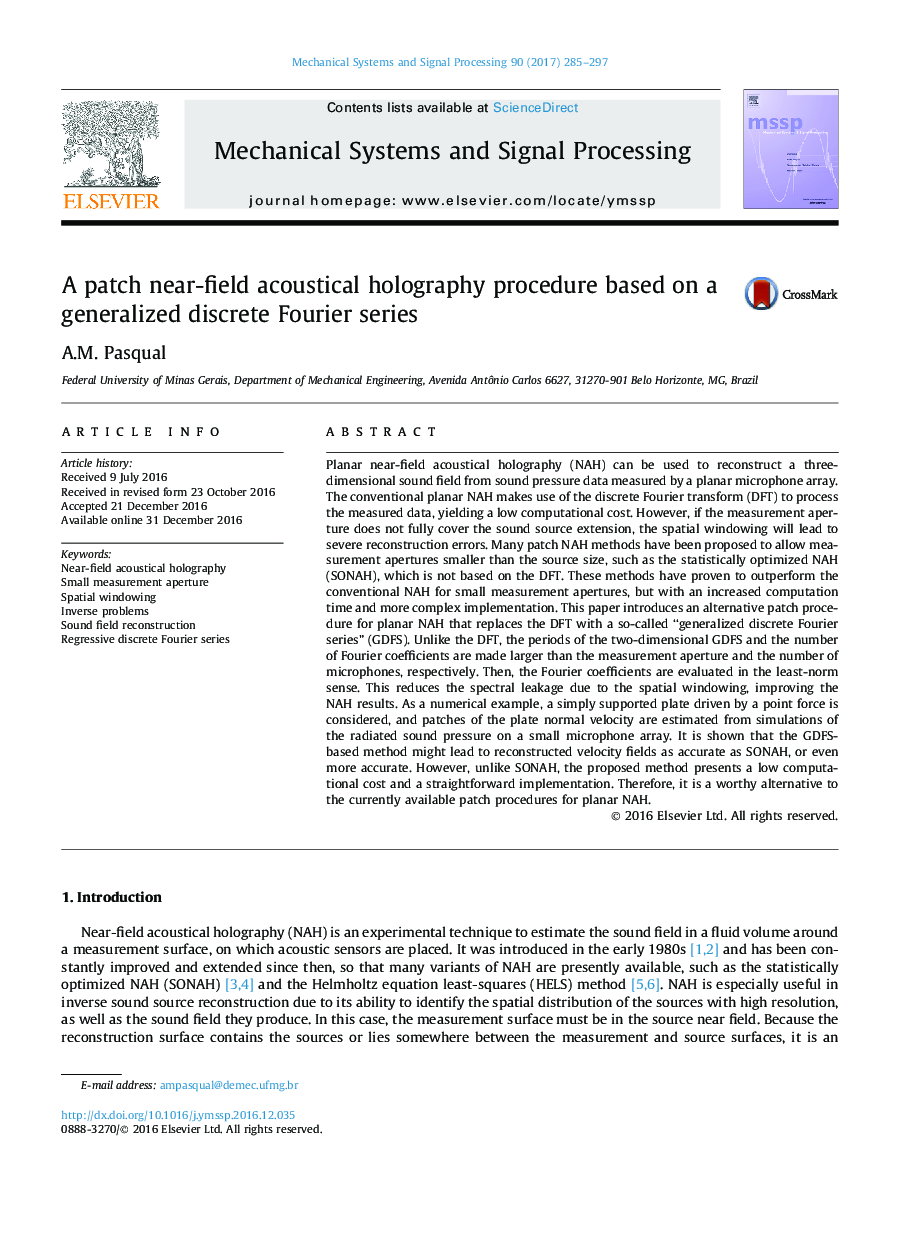| Article ID | Journal | Published Year | Pages | File Type |
|---|---|---|---|---|
| 4977051 | Mechanical Systems and Signal Processing | 2017 | 13 Pages |
â¢A procedure is proposed to reduce the spatial windowing effects in planar NAH.â¢A generalized discrete Fourier series replaces the discrete Fourier transform.â¢The method is computationally efficient and can be used with small apertures.â¢A thin plate driven by a point force is considered as a numerical example.â¢The proposed method and SONAH lead to similar reconstructed velocity fields.
Planar near-field acoustical holography (NAH) can be used to reconstruct a three-dimensional sound field from sound pressure data measured by a planar microphone array. The conventional planar NAH makes use of the discrete Fourier transform (DFT) to process the measured data, yielding a low computational cost. However, if the measurement aperture does not fully cover the sound source extension, the spatial windowing will lead to severe reconstruction errors. Many patch NAH methods have been proposed to allow measurement apertures smaller than the source size, such as the statistically optimized NAH (SONAH), which is not based on the DFT. These methods have proven to outperform the conventional NAH for small measurement apertures, but with an increased computation time and more complex implementation. This paper introduces an alternative patch procedure for planar NAH that replaces the DFT with a so-called “generalized discrete Fourier series” (GDFS). Unlike the DFT, the periods of the two-dimensional GDFS and the number of Fourier coefficients are made larger than the measurement aperture and the number of microphones, respectively. Then, the Fourier coefficients are evaluated in the least-norm sense. This reduces the spectral leakage due to the spatial windowing, improving the NAH results. As a numerical example, a simply supported plate driven by a point force is considered, and patches of the plate normal velocity are estimated from simulations of the radiated sound pressure on a small microphone array. It is shown that the GDFS-based method might lead to reconstructed velocity fields as accurate as SONAH, or even more accurate. However, unlike SONAH, the proposed method presents a low computational cost and a straightforward implementation. Therefore, it is a worthy alternative to the currently available patch procedures for planar NAH.
